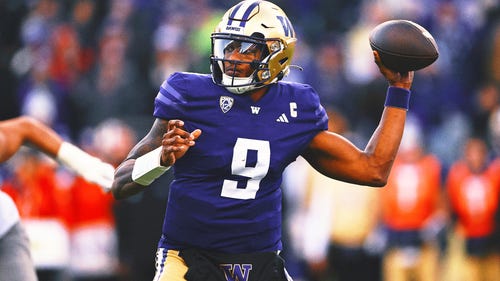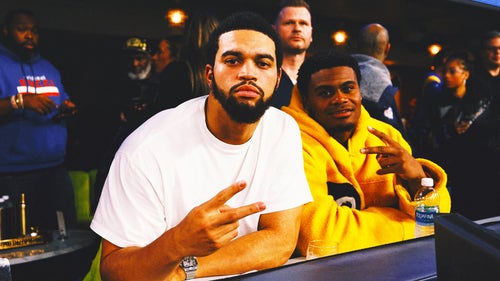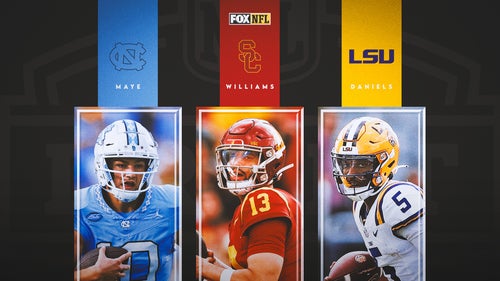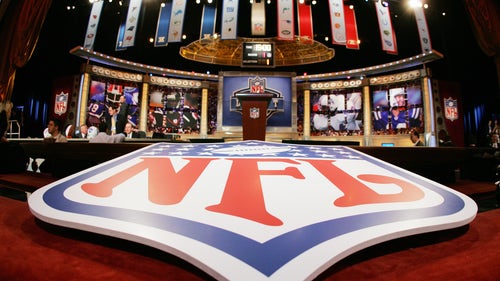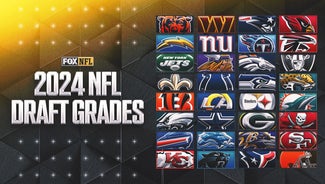
Coaches must adjust to extra free time
Until last month’s draft, coaching staffs around the NFL could try to ignore the lockout, carrying on for the most part as though it were business as usual. Lockout or no lockout, most staffs spend the spring months cramming for the draft.
Now that the draft has ended and the lockout is back on, staffs around the league are in uncharted territory. Not many of today’s assistant coaches were around during the previous NFL work stoppages, in 1982 and 1987. But I’ve talked to veteran team staffers who remember it well, and they still remember all the vacant looks on coaches faces as they were walking the halls of their team’s complexes, all revved up with nowhere to go.
For coaches -- creatures of habit, practically addicted to the process that comes with every season of the calendar -- this is about as negative as a situation can be. But around the league, the smart coaches are finding ways to use the time wisely, by thinking outside the box and trying to get a fresh approach on the coaching.
If I were still a head coach, here are a few things I’d be doing to occupy myself and my assistants as the lockout stretches into summer.
PERSONNEL
Under the current lockout restrictions, teams cannot sign undrafted free agents. But you can certainly scout them. During a normal offseason, these players are signed in a rush in the first couple days after the draft. They aren't an afterthought, but you don't spend as much time on them as you do on the draft itself.
With the extra time, I'd ask everyone in my personnel department, "Who is still out there who can make our team? And who can make our team better?" Then I'd do more work on interviewing college coaches, re-reading scouting reports and looking at game tape. The mindset, more than ever, would be, “There are still some gems out there, and we want to sign more than our share when we can.”
The proof is easy to find. There were 22 running backs taken in the 2009 NFL draft, and Arian Foster was not one of them. Signed by the Houston Texans, he was actually released prior to the season, only to be re-signed to the practice squad and then onto the active roster later in 2009.
On Opening Day 2010, Foster ran for 231 yards and three touchdowns against the Indianapolis Colts. That second-best opening-day total in the history of the league was just a prelude to Foster’s NFL-leading 1,616 yards.
There may not be another Foster out there in this year’s crop of newcomers, but you can be sure there are one or more future Pro Bowlers working out all that much harder, fueled by a burning desire to prove they belong in the NFL.
SUPPORT
I'd schedule a long meeting with my player development team (now called "player engagement" by the NFL) and see what trends they've noticed in the last year or two. I'd already know the headlines, but I'd be curious to find out about the more subtle items that were crossing their desk.
Are players having more problems in a specific area than they have in the past? Is there something that we as a team can do to address it? The best player-development people -- like the best coaches -- keep learning, and finding new ways to help and support their players.
TECHNOLOGY
Coaches in the NFL are always striving for a smoother, more interactive environment in which to present information, strategy and game plans to their players. But over the course of a coaching staff’s 12-month-a-year schedule, this has usually meant doing little more than upgrading periodically, from mimeograph sheets to photocopies in the 1970s, photocopies to overhead projectors in the '80s, overhead projectors to PowerPoint slides in the '90s.
Now, with some downtime -- and the realization that whatever part of the offensive or defensive system that's going to be installed before the next season will have to be done with speed and efficiency in the highly-compressed time frame teams will be facing -- I'd want to look at ways that we could streamline and improve our communication.
I'd find some of the smartest college coaches and players and invite them over for a day, just to show them our virtual playbooks and our presentations, and see if there's anything we can do to make the information clearer.
I learned from Bill Walsh years ago that for every hour you spend analyzing tactics and strategies in the offseason, you should spend an equal amount of time trying to find a better way to teach those tactics and strategies.
ANALYSIS
Years ago, I used to go to a coaches clinic in San Angelo, Texas. One of the best events was a “Midnight Kegger,” where you’d get a couple of well-respected pro coaches and they’d sit up for hours debating the direction of the game. It was the Great Debates -- with football coaches; whomever had the chalk last usually won.
To that end, wouldn’t it be great to get together with another staff (obviously from a team in the other conference -- a club you would only play if you both made it to the Super Bowl) and scrimmage ideas with one another?
There wouldn't be many surprises at this meeting -- most teams already closely monitor trends on a team-by-team and league-wide basis involving formations
(For example, the Patriots are the only team in the league that ran most of their plays from a two-tight end set last year, though across the league, two-tight formations were on the uptick).
But sometimes, an outsider can provide some perspective that we wouldn't get from the inside.
SELF-SCOUTING
Many teams will have coaches scout themselves, often in the bye week, by having the offensive guys look at their own defensive tendencies and tell the defensive coaches what they see, with the defensive staff doing the same for the offense.
This usually is limited to just a couple of games. Now with the extra time, it would be great to get a more complete perspective from the other side of the ball.
One of the most productive staff moves I ever made was hiring Mike Nolan, one of the most respected defensive coaches in the game, as my wide receivers coach. Having Mike become a part of the offensive staff for an entire year, while being able to have a brilliant defensive mind sitting in on offensive game-plan meetings, was tremendous.
This would be a chance to have some of that same cross-pollination at work.
TIME MANAGEMENT
I'd bring in the entire coaching staff and talk with them about our schedules during the season and the offseason. Where do we have overlap? Where do we have downtime? How can we pool our efforts more wisely?
It is very easy to continue to do what you do simply because “that’s just the way we have always done it.” But perhaps, with the time to come up for air and reflect, someone might think of a better way.
And it’s the search for a better way -- the single insight or fresh perspective or good idea -- that is the key to all of these projects.
When we have football again (and don’t worry, we will have football again) there is going to be a flurry of activity. An offseason’s worth of preparation and conditioning will have to be compressed into a couple of months or less.
In that rush to kickoff weekend, every single new good idea that you’ve developed is going to be valuable.







































































































































